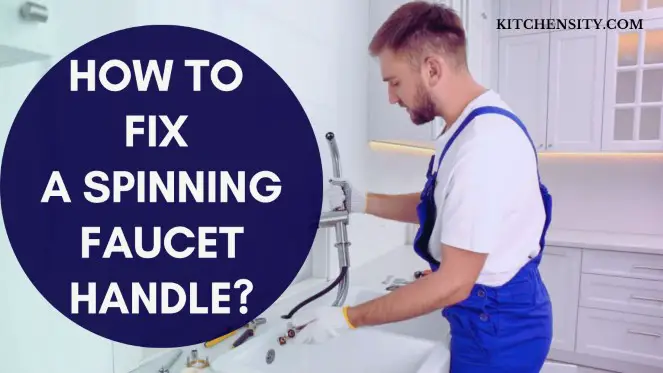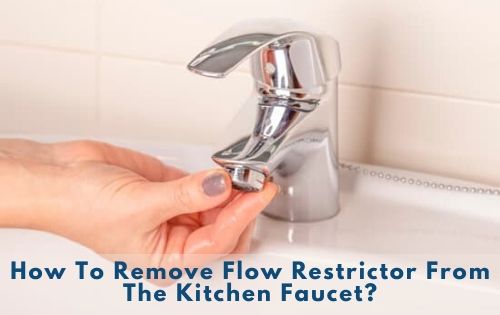Low water pressure in the kitchen sink can be a frustrating and inconvenient problem that many homeowners encounter.
It can disrupt daily activities such as washing dishes and filling pots, and even affect the overall functionality of the kitchen.
In this article, we will explore the causes of low water pressure in the kitchen sink, discuss possible solutions, and provide preventive measures to ensure a consistent water flow for a smooth kitchen experience.
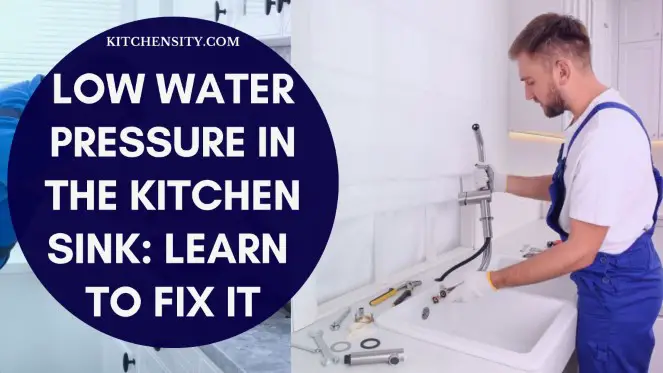
Table of Contents
- 1 Causes Of Low Water Pressure In The Kitchen Sink
- 2 How To Fix Low Water Pressure In Kitchen Sink?
- 3 DIY Methods To Improve Water Pressure
- 4 When to Call a Professional
- 5 Are You Facing Low Water Pressure Only In The Kitchen Or In The Whole Home?
- 6 Preventive Measures
- 7 How To Increase Water Pressure In Kitchen Sprayer?
- 8 No Water In The Kitchen Sink But Everywhere Else
- 9 Can A Clogged Kitchen Sink Cause Low Water Pressure?
- 10 Conclusion
- 11 YOU MAY ALSO LIKE
- 12 FAQs (Frequently Asked Questions)
- 12.1 Low Water Pressure In Kitchen Sink After Replacing Faucet
- 12.2 Can Low Water Pressure Be A Sign Of A Larger Plumbing Issue?
- 12.3 Why Is My Water Pressure Low All Of A Sudden?
- 12.4 How Can I Prevent Low Water Pressure In The Kitchen Sink?
- 12.5 Are There Any Diy Methods To Improve Water Pressure In The Kitchen Sink?
- 12.6 How Often Should I Clean The Aerator In My Kitchen Sink?
Causes Of Low Water Pressure In The Kitchen Sink
When you turn on the faucet in your kitchen sink, you expect a strong and steady stream of water. However, sometimes you may notice that the water pressure is significantly lower than usual.
Low water pressure can stem from various factors, including issues with plumbing fixtures, clogged aerators, water supply problems, or pipe blockages.
Understanding these causes and implementing appropriate solutions can help restore the water pressure to its optimal level.
Also Read – How To Fix A Faucet Handle That Turns Too Far?
1. Clogged Aerator
- One common cause of low water pressure in the kitchen sink is a clogged aerator. The aerator is a small device located at the end of the faucet.
- Over time, mineral deposits, debris, or sediment can accumulate within the aerator, obstructing the flow of water.
- Cleaning or replacing the aerator can often resolve this issue and improve water pressure.
2. Faulty Plumbing Fixtures
- Another possible cause of low water pressure is faulty plumbing fixtures.
- Faucets, valves, or pipes may develop leaks or become worn out, resulting in reduced water flow.
- Inspecting and repairing or replacing these fixtures can help restore proper water pressure.
Also Read – How To Lubricate A Swivel Faucet?
3. Water Supply Issues
- Sometimes, low water pressure can be attributed to problems with the water supply.
- The water supplier may be performing maintenance work or experiencing temporary disruptions in the water distribution system.
- In such cases, contacting the water supplier and seeking information can shed light on the issue.
4. Pipe Blockages
- Pipe blockages can also lead to low water pressure.
- Mineral deposits, rust, or debris buildup within the pipes can restrict the flow of water.
- Clearing these blockages by flushing the pipes or using suitable cleaning methods can significantly improve water pressure.
Also Read – How To Fix A Stiff Kitchen Faucet?
How To Fix Low Water Pressure In Kitchen Sink?
Understanding the underlying causes can guide you toward the appropriate solutions.
Here are some steps you can take to address low water pressure in your kitchen sink:
1. Cleaning The Aerator
- Start by inspecting and cleaning the aerator. Unscrew it from the faucet and rinse it thoroughly to remove any debris or sediment.
- If necessary, soak the aerator in a vinegar solution to dissolve mineral deposits.
- Once cleaned, reattach the aerator and check if the water pressure has improved.
2. Checking For Leaks And Replacing Faulty Fixtures
- Inspect the plumbing fixtures, including faucets, valves, and pipes, for any leaks or damages.
- Replace any faulty components to ensure a smooth water flow and to eliminate potential restrictions in the water supply.
- Tighten any loose connections and ensure that all fixtures are in good working condition.
You May Also Like: How To Remove Kitchen Faucet Without Basin Wrench?
3. Contacting The Water Supplier
- If you’ve ruled out issues with the aerator and plumbing fixtures, it may be necessary to contact your water supplier.
- Inquire about any ongoing maintenance or repairs that could be affecting the water pressure in your area.
- They can provide valuable information and assist in resolving the problem.
4. Clearing Pipe Blockages
- Persistent low water pressure may indicate a more severe issue, such as blockages within the pipes.
- In such cases, it’s advisable to seek professional assistance.
- Plumbers have the expertise and tools required to identify and clear any obstructions, restoring the water pressure to its optimal level.
You May Also Like: 6 Pull-Out Spray Kitchen Faucet Problems
DIY Methods To Improve Water Pressure
While some solutions require professional help, there are a few do-it-yourself methods that can potentially improve water pressure in your kitchen sink.
1. Adjusting The Shut-Off Valve
- The shut-off valve controls the water flow to your kitchen sink.
- If it’s not fully open, it can restrict the water pressure.
- Locate the shut-off valve, usually located under the sink, and ensure it is fully open. This simple adjustment may help increase the water pressure.
2. Flushing The Water Lines
- Over time, mineral deposits and sediment can accumulate in the water lines, causing blockages and reduced water pressure.
- Flushing the lines can help remove these deposits and restore the flow.
- Turn off the main water supply, then open all faucets in the house to allow the water to drain completely.
- Once the water stops flowing, turn on the main water supply again, and gradually open the faucets one by one to flush out any remaining debris.
Also Read – How To Fix A Spinning Faucet Handle?
3. Installing A Water Pressure Booster
- If you consistently experience low water pressure in your kitchen sink, installing a water pressure booster can be a viable solution.
- These devices work by increasing the pressure of the water entering your home, ensuring adequate water flow to all fixtures.
- Consult a professional plumber to determine the best water pressure booster for your specific needs.
When to Call a Professional
While some low water pressure issues can be resolved with DIY methods, there are situations where it’s best to seek professional assistance.
You May Also Like: How To Unclog A Sink Clogged With Coffee Grounds?
1. Persistent Low Water Pressure
- If you’ve tried the suggested solutions and the water pressure in your kitchen sink remains consistently low, it’s advisable to consult a professional plumber.
- They have the knowledge and expertise to identify underlying issues and provide appropriate solutions.
2. Complex Plumbing Issues
- If you suspect complex plumbing issues, such as significant pipe blockages or damaged water lines, it’s best to leave the repairs to professionals.
- They have the necessary tools and experience to handle such situations safely and effectively.
3. Safety Concerns
- If you encounter low water pressure accompanied by unusual symptoms like discolored water, foul odors, or strange noises, it’s essential to prioritize safety.
- These could be signs of a more serious problem, such as contaminated water or plumbing damage.
- In such cases, contact a professional plumber immediately to assess the situation and ensure your safety.
Also Read – How To Remove Flow Restrictor From The Kitchen Faucet?
Are You Facing Low Water Pressure Only In The Kitchen Or In The Whole Home?
If you’re experiencing low water pressure in your kitchen sink, it’s important to determine whether the issue is isolated to the kitchen or if it affects the entire home.
Checking the water pressure in different areas of your house can help identify the scope of the problem and guide you toward the appropriate solutions.
Here’s how to proceed:
1. Check Other Faucets
- Start by turning on the faucets in other areas of your home, such as the bathroom, laundry room, or outdoor spigots.
- Observe the water flow and pressure in these locations.
- If you notice low water pressure consistently throughout the house, it indicates a widespread issue that requires further investigation.
2. Examine Water-Using Appliances
- Run appliances that utilize water, such as showers, washing machines, or dishwashers.
- Pay attention to the water pressure during their operation.
- If these appliances also experience low water pressure, it suggests a systemic problem within the water supply.
3. Inquire With Neighbors
- Reach out to your neighbors and inquire if they are experiencing similar issues with low water pressure.
- If multiple households in your vicinity are affected, it may indicate a larger-scale problem with the municipal water supply or a regional issue that needs to be reported to the water supplier.
4. Contact The Water Supplier
- If you determine that the low water pressure is not exclusive to your kitchen but affects the entire home, it’s crucial to contact your water supplier.
- Inform them about the widespread low water pressure issue and inquire if there are any ongoing maintenance activities, repairs, or known issues in your area.
- They can provide you with information and updates regarding the situation.
By investigating the water pressure throughout your home, examining water-using appliances, and reaching out to your neighbors and water supplier, you can determine if the low water pressure issue is localized to the kitchen or if it requires a broader solution.
Understanding the scope of the problem will help you take the necessary steps to address and resolve the low water pressure situation effectively.
Also Read – How To Remove Handle From Faucet?
Preventive Measures
Taking preventive measures can help maintain optimal water pressure in your kitchen sink and avoid future issues. Consider the following tips:
1. Regular Maintenance
- Regularly inspect your plumbing fixtures and address any leaks or damages promptly.
- Conduct periodic checks to ensure that the shut-off valve is fully open and that there are no visible signs of blockages or restrictions in the pipes.
2. Proper Cleaning Practices
- Clean the aerator periodically to prevent mineral deposits and debris buildup.
- Avoid using harsh chemicals that can damage the fixtures.
- Instead, use mild cleaning solutions or vinegar to dissolve any sediment.
3. Monitoring Water Pressure
- Keep an eye on the water pressure in your kitchen sink and other fixtures.
- Sudden drops or changes in pressure can indicate underlying problems.
- By monitoring the water pressure regularly, you can detect and address any issues early on, preventing them from escalating into more significant problems.
Also Read – How To Fix A Leaky Kitchen Faucet?
How To Increase Water Pressure In Kitchen Sprayer?
If you’re experiencing low water pressure in your kitchen sprayer, it can hinder your ability to efficiently clean dishes and perform various kitchen tasks.
Fortunately, there are several steps you can take to increase the water pressure and enhance the functionality of your kitchen sprayer.
Here’s what you can do:
1. Check The Water Supply Valve
- Ensure that the water supply valve connected to the kitchen sprayer is fully open.
- Sometimes, the valve may not be fully turned on, resulting in reduced water pressure.
- Turn the valve counterclockwise to ensure it is completely open and allows maximum water flow.
2. Clean The Sprayer Nozzle
- Over time, mineral deposits and debris can accumulate in the sprayer nozzle, obstructing the water flow and reducing the pressure.
- Remove the sprayer nozzle carefully, following the manufacturer’s instructions, and soak it in a solution of equal parts white vinegar and water.
- Allow it to soak for about 30 minutes to dissolve any deposits.
- Rinse the nozzle thoroughly and reattach it to the sprayer. This cleaning process can help restore proper water pressure.
3. Inspect The Sprayer Hose
- Examine the sprayer hose for any kinks, twists, or damage that may be restricting water flow.
- Straighten out any kinks or twists and ensure that the hose is properly connected to both the sprayer nozzle and the water supply valve.
- If the hose is damaged or worn out, consider replacing it with a new one to ensure optimal water pressure.
4. Check For Plumbing Blockages
- If the above steps do not improve the water pressure in the kitchen sprayer, there may be blockages in the plumbing system.
- It’s recommended to consult a professional plumber who can assess the situation and identify any hidden blockages or plumbing issues that are affecting the water pressure specifically in the kitchen sprayer.
- They will have the expertise and necessary tools to address and resolve the problem effectively.
5. Consider A High-Pressure Kitchen Sprayer
- If you consistently experience low water pressure despite troubleshooting efforts, you may want to consider upgrading to a high-pressure kitchen sprayer.
- These sprayers are specifically designed to deliver a powerful water flow, ensuring optimal pressure for your cleaning needs.
- Consult with a local kitchen supply store or plumber to explore the options available and choose a high-quality sprayer that meets your requirements.
Remember to prioritize safety and use caution when dealing with plumbing-related tasks.
If you’re uncertain or uncomfortable with any of the steps mentioned, it’s best to seek professional assistance to avoid any potential damage or injury.
No Water In The Kitchen Sink But Everywhere Else
If you’re experiencing a lack of water specifically in your kitchen sink while water flow remains normal in other areas of your home, it can be quite puzzling. This issue can disrupt your daily routine and hinder your ability to carry out essential tasks in the kitchen. Let’s explore some potential causes and solutions for this problem:
Check The Shut-Off Valve
- Start by locating the shut-off valve under the kitchen sink. Ensure that it is fully open.
- Sometimes, the valve may have been inadvertently closed, leading to a lack of water flow in the kitchen sink.
- Turn the valve counterclockwise to fully open it and check if the water starts flowing.
Inspect The Faucet
- Examine the kitchen sink faucet for any signs of damage or blockages.
- Sediment, debris, or mineral deposits can accumulate over time and obstruct the flow of water.
- Disassemble the faucet, clean all components thoroughly, and reassemble it.
- This cleaning process can help eliminate any blockages and restore water flow to the kitchen sink.
Examine The Water Supply Line
- Inspect the water supply line leading to the kitchen sink.
- Ensure that it is not kinked, bent, or damaged in any way. A damaged supply line can restrict water flow.
- If you notice any issues, replace the supply line with a new one to restore proper water flow.
Check The Aerator
- The aerator at the end of the faucet spout can also be a culprit for low or no water flow.
- Remove the aerator and clean it thoroughly.
- Sometimes, mineral deposits or debris can accumulate and block the water flow.
- After cleaning, reattach the aerator and test the water flow in the kitchen sink.
Verify Plumbing Issues
- If none of the above solutions work, there might be a plumbing issue specific to the kitchen sink.
- It’s advisable to consult a professional plumber who can assess the situation and identify any hidden problems within the plumbing system.
- They will have the expertise to detect and fix issues that may be causing the lack of water in the kitchen sink.
Remember, safety is paramount when dealing with plumbing-related matters.
If you’re unsure or uncomfortable handling any of the troubleshooting steps, it’s best to seek professional help to avoid further complications.
Can A Clogged Kitchen Sink Cause Low Water Pressure?
Yes, a clogged kitchen sink can indeed cause low water pressure.
When the drainpipe or the P-trap beneath your kitchen sink becomes clogged with debris, food particles, grease, or other materials, it can restrict the flow of water and result in decreased water pressure.
Here’s how a clogged kitchen sink can affect water pressure:
- Blockage In The Drainpipe: Over time, substances like food scraps, oil, and soap residue can accumulate and form blockages in the drainpipe of your kitchen sink. These blockages can impede the flow of water, reducing water pressure and causing it to back up into the sink.
- Clog In The P-Trap: The P-trap, a curved section of pipe beneath the sink, is designed to prevent sewer gases from entering your home. However, it can also become clogged with debris, causing water to accumulate and obstructing the flow of water through the sink drain.
- Reduced Drainage Efficiency: When a kitchen sink is clogged, water will drain slowly or may not drain at all. This inefficient drainage system can lead to a decrease in water pressure, as the water has difficulty passing through the clogged areas.
- Affect On Other Fixtures: In some cases, a severe clog in the kitchen sink can impact the water pressure in other fixtures connected to the same drain line. If the clog is located further down the drain system, it can cause water pressure issues in other areas of your home as well.
To address low water pressure caused by a clogged kitchen sink, you can take the following steps:
- Use A Plunger: Start by using a plunger to create suction and dislodge the clog. Fill the sink partially with water, place the plunger over the drain, and vigorously plunge up and down. This action can help break up the clog and restore water flow.
- Try A Drain Snake: If the plunger doesn’t work, you can use a drain snake or auger to manually remove the clog. Insert the snake into the drain and rotate it to break up or pull out the obstruction.
- Use Natural Remedies: For minor clogs, you can try pouring boiling water, baking soda, and vinegar down the drain. This combination can help dissolve grease and debris, potentially clearing the clog and restoring water pressure.
- Seek Professional Assistance: If the clog persists or if you’re unable to resolve the issue yourself, it’s advisable to contact a professional plumber. They have the necessary tools and expertise to locate and remove stubborn clogs safely.
In conclusion, a clogged kitchen sink can indeed lead to low water pressure.
By understanding the causes and taking appropriate steps to clear the clog, you can restore optimal water flow and improve the performance of your kitchen sink.
Conclusion
Low water pressure in the kitchen sink can be a frustrating issue, but understanding the causes and implementing appropriate solutions can help restore optimal water flow.
By addressing clogged aerators, faulty plumbing fixtures, water supply issues, and pipe blockages, you can improve water pressure and enhance the functionality of your kitchen.
Remember to try DIY methods such as adjusting the shut-off valve, flushing the water lines, or installing a water pressure booster.
However, if the problem persists or if you encounter complex plumbing issues or safety concerns, it’s best to consult a professional plumber.
By taking preventive measures and practicing regular maintenance, you can ensure consistent water pressure in your kitchen sink and enjoy a seamless kitchen experience.
YOU MAY ALSO LIKE
- How To Clean Plastic Kitchen Sink?
- Tighten A Loose Moen Single Handle Kitchen Faucet & Base [3 Steps]
- How To Remove Flow Restrictor From The Kitchen Faucet?
FAQs (Frequently Asked Questions)
-
Low Water Pressure In Kitchen Sink After Replacing Faucet
Low water pressure after replacing a faucet can be caused by a few factors. Check for a clogged aerator, ensure the water supply valve is fully open, inspect for kinks or blockages in the supply lines, and verify proper installation. If the issue persists, consult a professional plumber for further assistance.
-
Can Low Water Pressure Be A Sign Of A Larger Plumbing Issue?
Yes, low water pressure can sometimes indicate more significant plumbing issues such as pipe blockages or damaged water lines.
If the problem persists or if you notice other concerning symptoms, it’s best to consult a professional plumber to assess the situation. -
Why Is My Water Pressure Low All Of A Sudden?
Sudden low water pressure can be attributed to various factors such as a partially closed water supply valve, a clogged or damaged pipe, a malfunctioning pressure regulator, or a problem with the municipal water supply.
It is advisable to check these potential causes or consult a professional plumber for a thorough inspection and resolution of the issue. -
How Can I Prevent Low Water Pressure In The Kitchen Sink?
Regular maintenance, including checking for leaks, cleaning the aerator, and monitoring water pressure, can help prevent low water pressure.
Promptly addressing any issues and practicing proper cleaning habits can contribute to maintaining optimal water flow. -
Are There Any Diy Methods To Improve Water Pressure In The Kitchen Sink?
Yes, there are a few DIY methods you can try, such as adjusting the shut-off valve, flushing the water lines, or installing a water pressure booster.
However, if the problem persists or if you’re unsure, it’s best to consult a professional plumber. -
How Often Should I Clean The Aerator In My Kitchen Sink?
Cleaning the aerator in your kitchen sink should be done periodically, depending on the water quality in your area.
If you notice a decrease in water pressure or a decrease in the water stream, it’s a good indication that the aerator needs cleaning.
Katrina Smith is a seasoned expert with over 25 years of experience in all things related to cooking and the kitchen. As an avid cook and kitchen enthusiast, she is passionate about sharing her knowledge and expertise on cookware, kitchen appliances, kitchen tips, and kitchen staples.
Through her articles and reviews, Katrina aims to inspire and help others improve their cooking skills, experiment with different ingredients, and invest in quality cookware and appliances.

![How To Unclog A Sink Clogged With Coffee Grounds? [3 Effective Ways] 3 How-to-Unclog-a-Sink-Clogged-With-Coffee-Grounds](https://www.kitchensity.com/wp-content/uploads/2020/06/How-to-Unclog-a-Sink-Clogged-With-Coffee-Grounds.jpg)
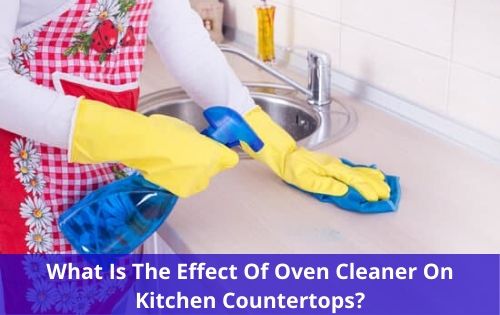
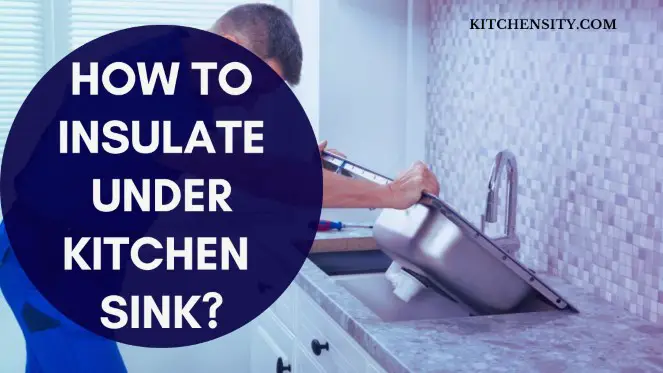
![Best Insulation Under The Kitchen Sink [3 Top Insulations] 6 Best Insulation Under The Kitchen Sink](https://www.kitchensity.com/wp-content/uploads/2023/04/Best-Insulation-Under-The-Kitchen-Sink.jpg)
